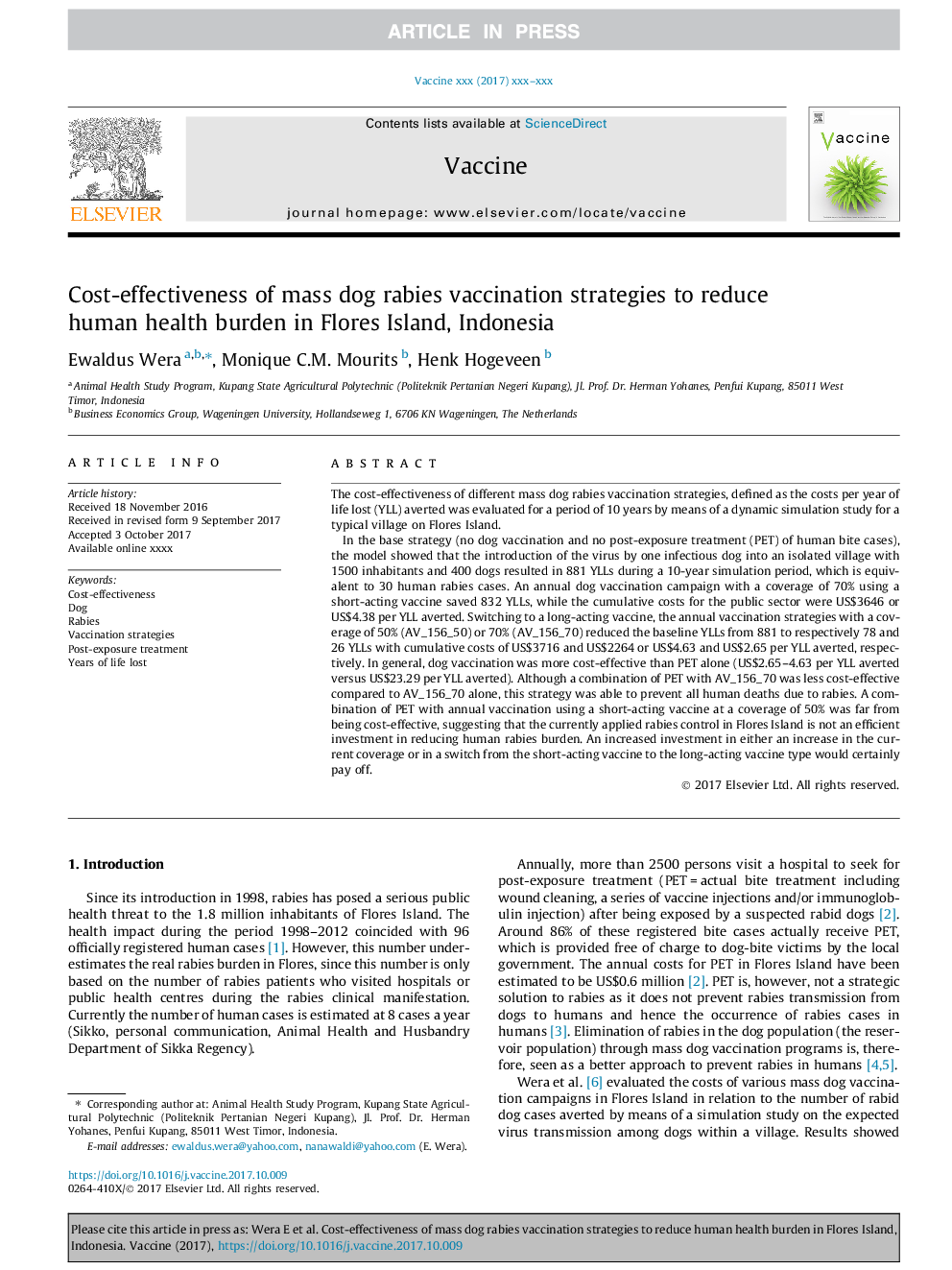| Article ID | Journal | Published Year | Pages | File Type |
|---|---|---|---|---|
| 8486644 | Vaccine | 2017 | 10 Pages |
Abstract
In the base strategy (no dog vaccination and no post-exposure treatment (PET) of human bite cases), the model showed that the introduction of the virus by one infectious dog into an isolated village with 1500 inhabitants and 400 dogs resulted in 881 YLLs during a 10-year simulation period, which is equivalent to 30 human rabies cases. An annual dog vaccination campaign with a coverage of 70% using a short-acting vaccine saved 832 YLLs, while the cumulative costs for the public sector were US$3646 or US$4.38 per YLL averted. Switching to a long-acting vaccine, the annual vaccination strategies with a coverage of 50% (AV_156_50) or 70% (AV_156_70) reduced the baseline YLLs from 881 to respectively 78 and 26 YLLs with cumulative costs of US$3716 and US$2264 or US$4.63 and US$2.65 per YLL averted, respectively. In general, dog vaccination was more cost-effective than PET alone (US$2.65-4.63 per YLL averted versus US$23.29 per YLL averted). Although a combination of PET with AV_156_70 was less cost-effective compared to AV_156_70 alone, this strategy was able to prevent all human deaths due to rabies. A combination of PET with annual vaccination using a short-acting vaccine at a coverage of 50% was far from being cost-effective, suggesting that the currently applied rabies control in Flores Island is not an efficient investment in reducing human rabies burden. An increased investment in either an increase in the current coverage or in a switch from the short-acting vaccine to the long-acting vaccine type would certainly pay off.
Related Topics
Life Sciences
Immunology and Microbiology
Immunology
Authors
Ewaldus Wera, Monique C.M. Mourits, Henk Hogeveen,
